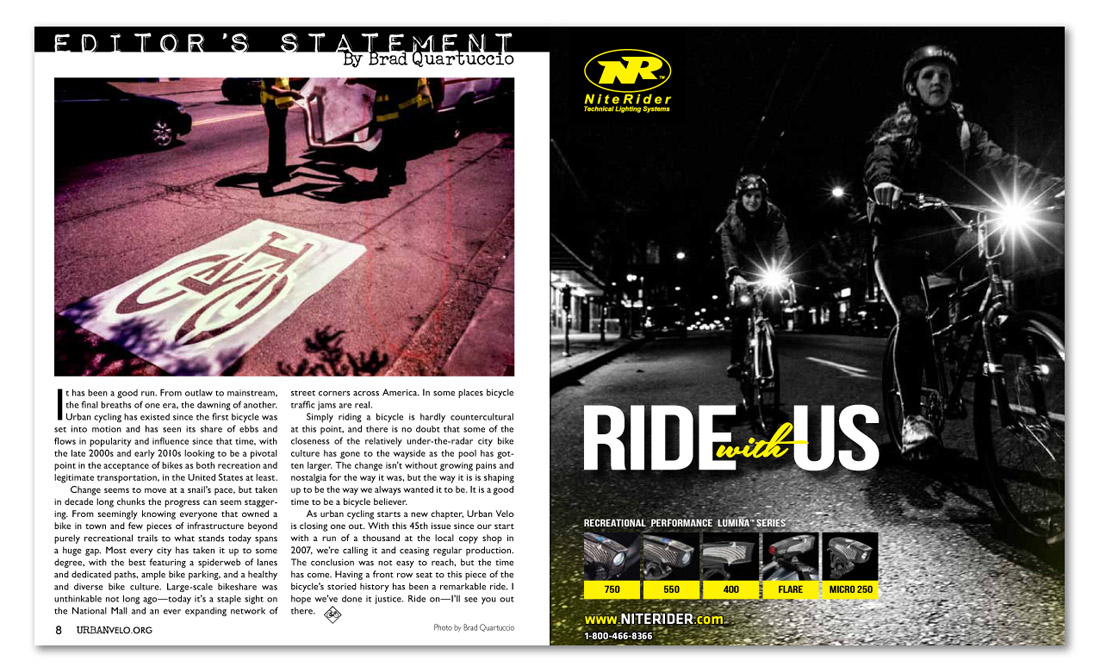


Editor's Statement
It has been a good run. From outlaw to mainstream, the final breaths of one era, the dawning of another. Urban cycling has existed since the first bicycle was set into motion and has seen its share of ebbs and flows in popularity and influence since that time, with the late 2000s and early 2010s looking to be a pivotal point in the acceptance of bikes as both recreation and legitimate transportation, in the United States at least.
Change seems to move at a snail’s pace, but taken in decade long chunks the progress can seem staggering. From seemingly knowing everyone that owned a bike in town and few pieces of infrastructure beyond purely recreational trails to what stands today spans a huge gap. Most every city has taken it up to some degree, with the best featuring a spiderweb of lanes and dedicated paths, ample bike parking, and a healthy and diverse bike culture. Large-scale bikeshare was unthinkable not long ago—today it’s a staple sight on the National Mall and an ever expanding network of street corners across America. In some places bicycle traffic jams are real.
Simply riding a bicycle is hardly countercultural at this point, and there is no doubt that some of the closeness of the relatively under-the-radar city bike culture has gone to the wayside as the pool has gotten larger. The change isn’t without growing pains and nostalgia for the way it was, but the way it is is shaping up to be the way we always wanted it to be. It is a good time to be a bicycle believer.
As urban cycling starts a new chapter, Urban Velo is closing one out. With this 45th issue since our start with a run of a thousand at the local copy shop in 2007, we’re calling it and ceasing regular production. The conclusion was not easy to reach, but the time has come. Having a front row seat to this piece of the bicycle’s storied history has been a remarkable ride. I hope we’ve done it justice. Ride on—I’ll see you out there.
NiteRider